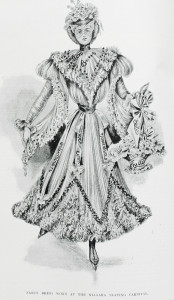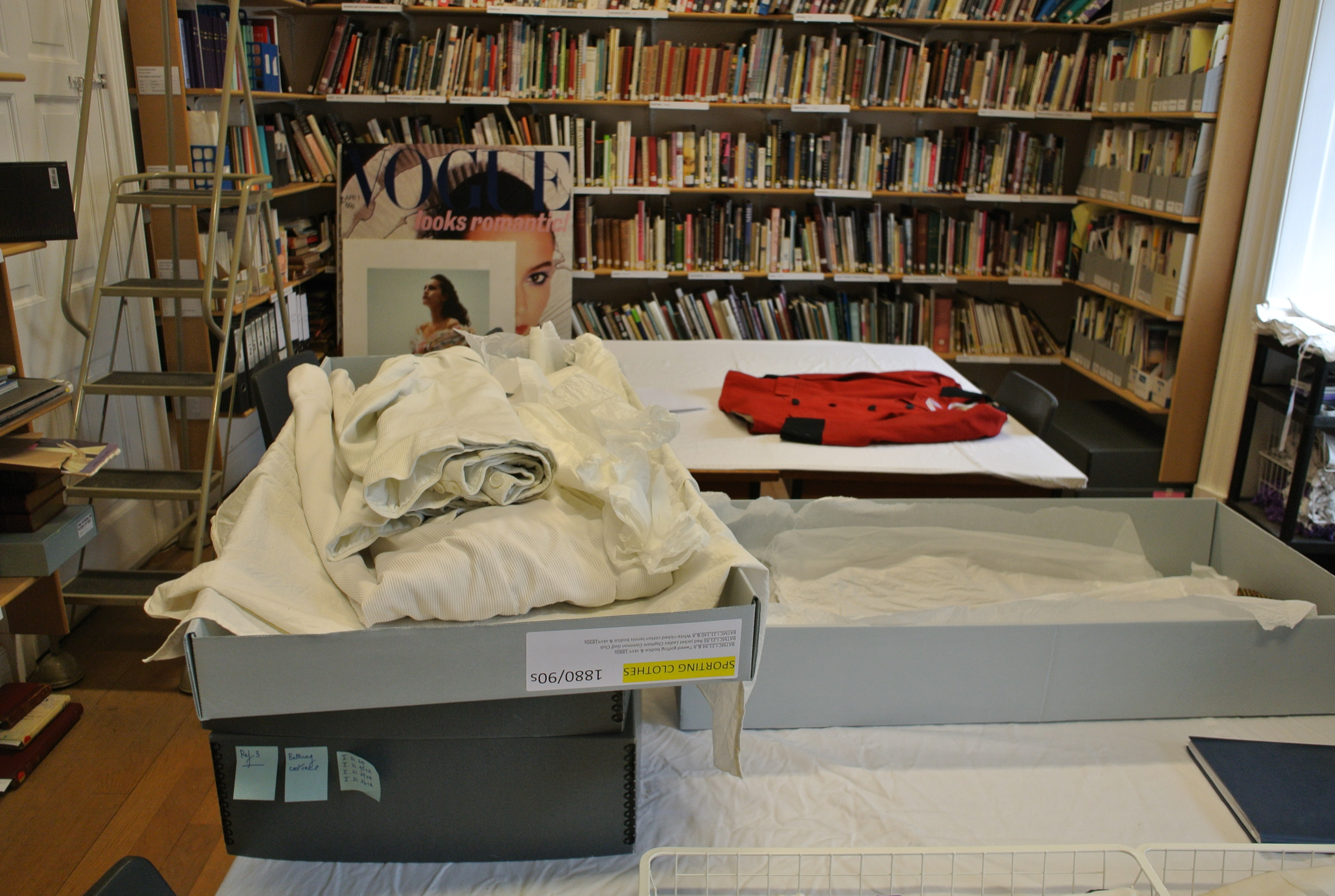I’ve been going to various museums and galleries to fondle Victorian women’s sporting wear. Spending time in these institutions is fascinating for getting up close and personal with things that are there. It is also interesting for considering what is not there.
Many of these institutions have limited or non-existent purchase grants. While some can more deliberately seek out specific garments from auction houses and personal collections to create a comprehensive narrative, some cannot. Many galleries rely on public donations, a process which is highly valued but also necessitates a specific critical eye, as it means that donations can only tell one story – what a specific group think is valuable.

Talking with curators is also revealing for other ways in which a collection is shaped:
– objects that withstand the test of time – only robust garments survive both wear and also storage
– well tailored, underused, made of sturdy materials – many of the garments I have looked at are of heavy wool or tweed material
– well used artefacts or delicate objects do not last. Invariably many donations come from upper eschelons of society. There are few examples of working class/ everyday dress
– what the curator of the time deems valuable – different styles and tastes determine the collection
– garments that evade reuse. Many garments were expensive and as a result were adapted for other uses after the central wear was complete – other garments, fancydress, childrens wear
– fancy dress is an interesting category. Dressing up was a popular activity in Victorian society. So, some donated garments could well be fancy dress, which might be obvious to a researcher. This also provides another explanation as to why such garments survived. The illustration on the left is the “Bon-Bon”, a fancy dress costume worn by Miss Roche at the Niagara Skating carnival in 1896.

This Post Has 0 Comments